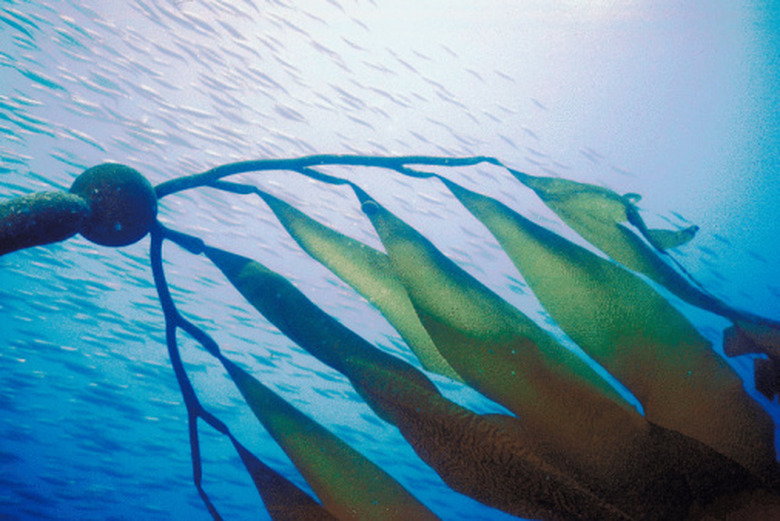Plants That Live In The Deep Sea
While you may not think about it, the deep sea has its own ecosystem with different plants and animals. The plants and animals that live in these cold environments, however, require special adaptations. Light does not fully penetrate to the sea floor, but these plants still undergo photosynthesis. They also produce oxygen. Deep sea plants provide food and shelter for the marine life living at these depths.
Kelp
Kelp
Kelp forests are found in oceans and seas throughout the world, even in the Antarctic and Arctic circles. Large kelp forests need temperatures below 68 degrees Fahrenheit to grow, and they are found up to 132 feet below the surface of the water. Kelp leaves or blades are wide, long and green, and they have a node at the base of them that connects the blades to the stalk. This node is known as the gas bladder, and it helps keep the plant standing straight in the water. Kelp has roots that dig into the rocky sea bottom and hold the plant in place.
Poseidonia
Poseidonia
This plant grows in large clumps on the sea floor, creating a virtual meadow in the sand. They grow up to 132 feet below the sea surface, and they produce both oxygen and biomass, which is type of biological material created from living or dead organisms. The leaves of the Poseidonia are green, long, thin and bladelike, and the plant produces both flowers and fruit. The flowers and the fruit are both green, and the fruit resembles an olive. This plant needs a high amount of light penetration to survive, and it can die off if the water is too cloudy.
Seagrasses
Seagrasses
Seagrass are a type of flowering plant with roots, and they reproduce via rhizomes, which is a type of plant node that shoots out roots and shoots. Seagrass looks similar to standard grass, with long, blade-like green leaves, except that these plants thrive in underwater and rocky or sandy soil. The flower is star-shaped and ranges from pure white to reddish. Seagrasses are an important food for underwater life, and seagrass beds act as nurseries.
Seaweed
Seaweed
Seaweed is a type of marine algae with very long strands on which a large number of leaves cling. Seaweed is generally light green in color, but color can range from brown to reddish. This plant can live in very deep waters, up to 688 feet. It performs photosynthesis by using blue light, which is a type of sunlight. Seaweed reproduces via cloning.
Cite This Article
MLA
Faucheux, Misty. "Plants That Live In The Deep Sea" sciencing.com, https://www.sciencing.com/plants-that-live-in-the-deep-sea-13428509/. 21 July 2017.
APA
Faucheux, Misty. (2017, July 21). Plants That Live In The Deep Sea. sciencing.com. Retrieved from https://www.sciencing.com/plants-that-live-in-the-deep-sea-13428509/
Chicago
Faucheux, Misty. Plants That Live In The Deep Sea last modified August 30, 2022. https://www.sciencing.com/plants-that-live-in-the-deep-sea-13428509/
